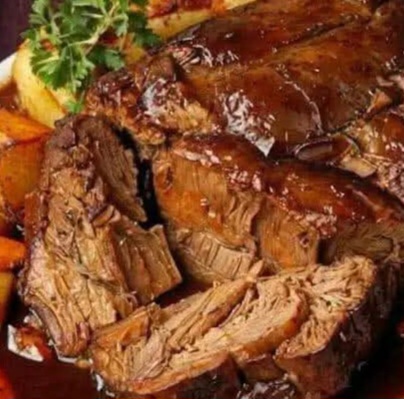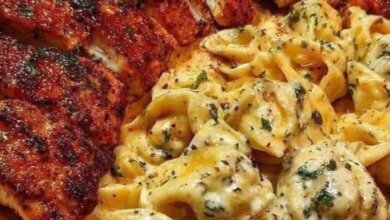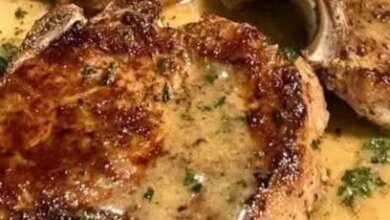
Introduction
The Enveloppe Method Roast is a cooking technique where meat is tightly wrapped in foil or parchment, sometimes layered with aromatics and fats, to seal in moisture and flavor during roasting. This method creates a succulent, tender roast with enhanced natural flavors and minimal moisture loss. It is ideal for beef, pork, or poultry and produces an elegant presentation perfect for family dinners or special occasions.
—
Origin and Cultural Significance
The “enveloppe” technique has roots in French cuisine, deriving from “en papillote”, which traditionally involves cooking food in parchment to trap steam and aroma. While commonly used for fish and vegetables, French chefs adapted it for roasts to retain juices and intensify flavors.
Historically, this method emphasized refined techniques, making roasts more tender and flavorful, while minimizing the risk of overcooking. Today, the enveloppe method is a symbol of culinary precision and sophistication, bridging rustic comfort with elegant presentation.
—
Ingredients – Quantity (Serves 4–6)
For the Roast
2–3 lb (900 g–1.4 kg) beef, pork, or lamb roast
2 tablespoons olive oil or softened butter
4 garlic cloves, sliced
1 teaspoon salt
1/2 teaspoon black pepper
1 teaspoon dried herbs (rosemary, thyme, or oregano)
1 large onion, sliced
2 carrots, cut into chunks
1–2 stalks celery, cut into chunks
Optional: 1/2 cup wine, stock, or broth for added moisture
Optional Additions
Fresh herbs tucked into the meat or under the foil
Lemon slices for poultry or lighter roasts
Mustard or herb paste rubbed on the meat
Mushrooms, potatoes, or other root vegetables for a one-pan roast
Aromatic spices like paprika, cumin, or fennel seeds
—
Tips for Success
Pat meat dry before seasoning to ensure a flavorful crust.
Tightly wrap the meat to prevent steam from escaping.
Use a heavy-duty foil or parchment to avoid tearing.
Allow roast to rest before cutting to retain juices.
Pre-sear the roast in a skillet for extra color and flavor if desired.
Use a meat thermometer to ensure the roast reaches the desired doneness.
—
Instructions
1. Prepare the Meat:
Pat the roast dry.
Rub with olive oil or butter, garlic slices, salt, pepper, and herbs.
2. Prepare Vegetables (Optional):
Arrange onions, carrots, and celery in a foil or parchment layer.
Place the roast on top.
3. Wrap the Roast:
Tightly fold foil or parchment around the roast and vegetables to create a sealed packet.
Ensure no gaps remain to trap steam.
4. Roast:
Preheat oven to 350°F (175°C).
Place the wrapped roast on a baking sheet.
Roast for 20–25 minutes per pound, or until desired internal temperature is reached (e.g., 135°F for medium-rare beef, 145°F for pork).
5. Finish (Optional):
Open foil for the last 10–15 minutes to brown the surface if desired.
Remove from oven and allow the roast to rest 10–15 minutes before slicing.
6. Serve:
Slice roast, arrange vegetables, and drizzle pan juices or sauce over the top.
—
Description
The Enveloppe Method Roast results in exceptionally tender, juicy meat infused with aromatic herbs, garlic, and vegetables. The tightly sealed cooking environment ensures moisture retention, while roasting in foil allows the flavors to meld naturally. The roast presents beautifully with minimal effort, offering a melt-in-your-mouth texture and deeply satisfying aroma.
—
Nutritional Information
Approximate per serving (without heavy sauces):
Calories: 350–450
Protein: 35–40 g
Carbohydrates: 6–10 g (mainly from vegetables)
Fat: 20–25 g
Fiber: 2–4 g
Sugar: 2–4 g
Values depend on meat cut, fat content, and vegetable choices.
—
Conclusion
The Enveloppe Method Roast is an elegant yet simple technique that elevates a basic roast into a succulent, flavorful centerpiece. Its ability to lock in juices while infusing aromatics makes it ideal for both weeknight dinners and festive meals. Minimal effort yields maximum flavor and tenderness.
—
Recommendation
Pair with roasted potatoes, steamed vegetables, or a fresh green salad.
Reserve pan juices for a simple gravy or au jus.
Garnish with fresh herbs for color and aroma.
Try different meat cuts to explore flavor and texture variations.
—
Embracing Healthful Indulgence
This roasting method encourages wholesome cooking: minimal added fat, vegetables cooked alongside the meat, and natural flavors enhanced without heavy sauces. By pairing lean cuts with root vegetables or greens, you can enjoy a rich, satisfying roast while keeping the meal balanced, nutritious, and nourishing.




